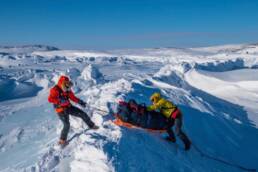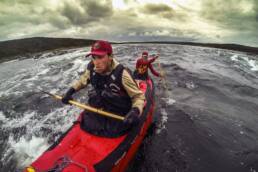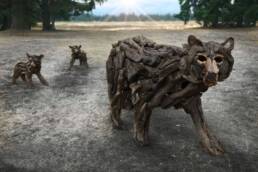An infamous arctic expedition gone awry. Cannibalism. Historical blasphemy. Three adventurers struggle to retrace the fateful path of a 19th-Century explorer the world should know about. Story and photographs by Frank Wolf.
I wake early on day 18, after another night tenting in temperatures below -30°C. I haven’t had feeling in my toes for a week, and my right foot throbs constantly. I pull the appendage out of the sleeping bag and take a look. Most of the toenails are black and it’s sore and swollen, with a blood blister covering the ball. My toes are not frostbitten, but they definitely have nerve damage. I’ve become a hobbled liability. The dogs have finally rebelled after weeks of service.
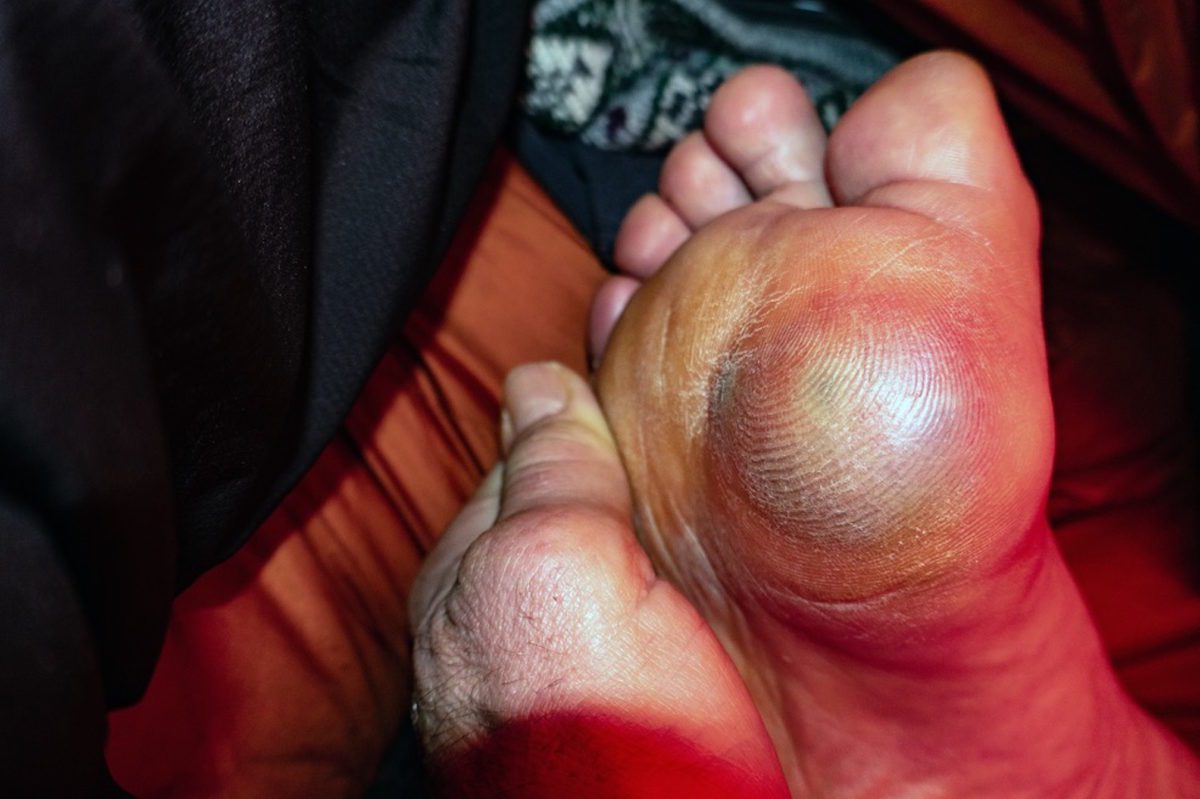
David Reid, Richard Smith, and I have been travelling self-supported by ski and crampon for 350 kilometres (217 miles) up frozen rivers, over tundra, and across sea ice. We are pulling 200-pound sleds, retracing the Arctic route of 19th-century explorer John Rae. During his 1854 journey, Rae happened upon several groups of Inuit hunters who told him stories of dead bodies, with evidence of cannibalism, that were scattered east of where we’re camped. The Inuit also produced monogrammed items from the ships HMS Erebus and HMS Terror, which confirmed the dead were from the infamous Franklin expedition.
With over 200 kilometres yet to go, my deteriorating feet force me to step off.

During the seven years preceding Rae’s findings, the British sent dozens of ships in search of explorer Sir Franklin and his 128 missing crewamembers. Rae, the first explorer to travel overland with Inuit guides and use their methods to survive and thrive in the Arctic, had finally uncovered the truth. Instead of being hailed a hero upon his return, he was ostracized by London’s elite. Scathing rebukes in the press by Franklin’s widow and luminaries like Charles Dickens turned him into a pariah. The contentious issue was cannibalism. The upper crust refused to accept that British military men could stoop so low. As a result, Rae was cast into historical obscurity.
With over 200 kilometres (124 miles) yet to go, my deteriorating feet force me to step off in the nearby hamlet of Kugaaruk, Nunavut. I’ve tried to manage the damage for two weeks, but my stint on Rae’s trail is done. I am dead to the mission. Time to heal. Reid, a Scot like Rae, will continue the trip with Smith. This is Reid’s baby; it’s been his dream for two years to bring his countryman’s name to light and help restore Rae’s ancestral Scottish home into a museum about his Arctic exploits. The pair skis onward, two specks fading into the white blanket of Pelly Bay. I lurch toward the hamlet and, no longer part of the team, simply fade away.
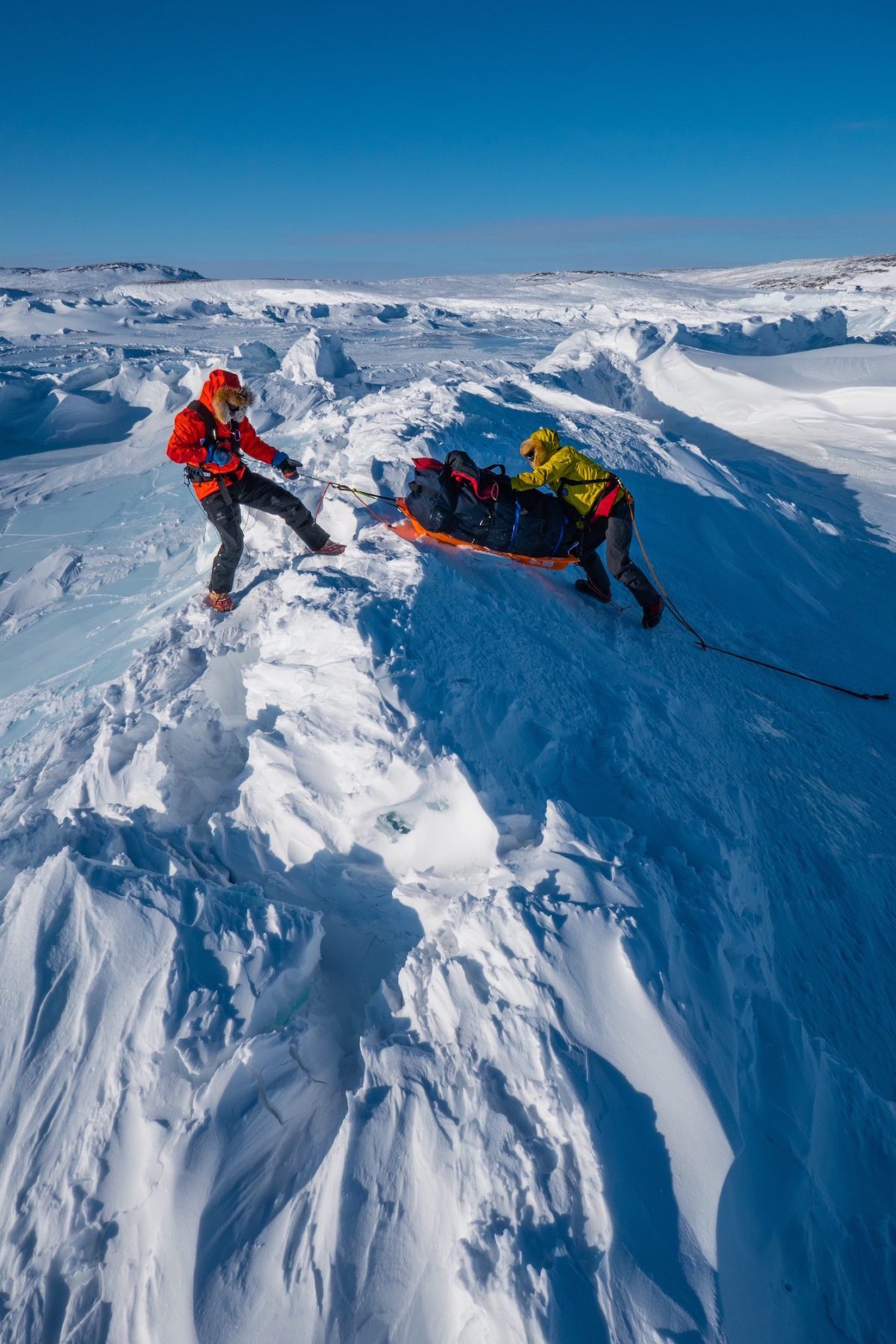
Related Stories
Paddling to the Arctic…Without a Jacket
On a 1,750-kilometre, 35-day paddling epic, an old-school mountain master's clothes – or lack thereof – still make the…
We found him! Meet Driftwood Artist Alex Witcombe
Two months ago we posted a mystery about a wolf sculpture made from driftwood near the Oyster River on Vancouver…


